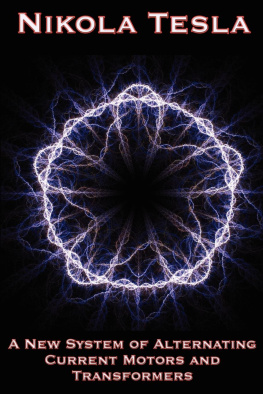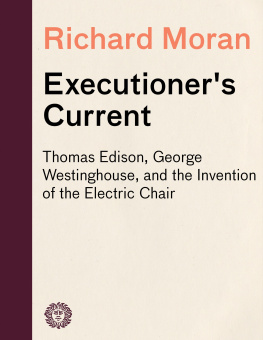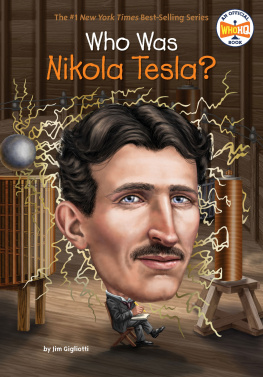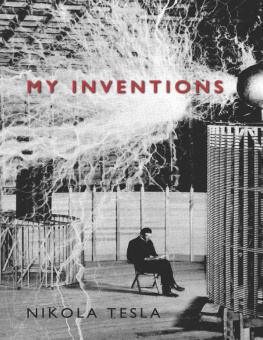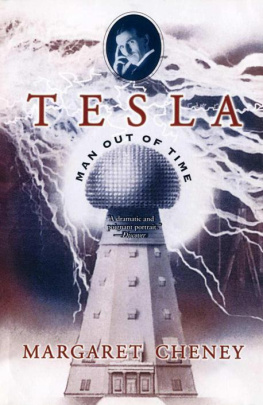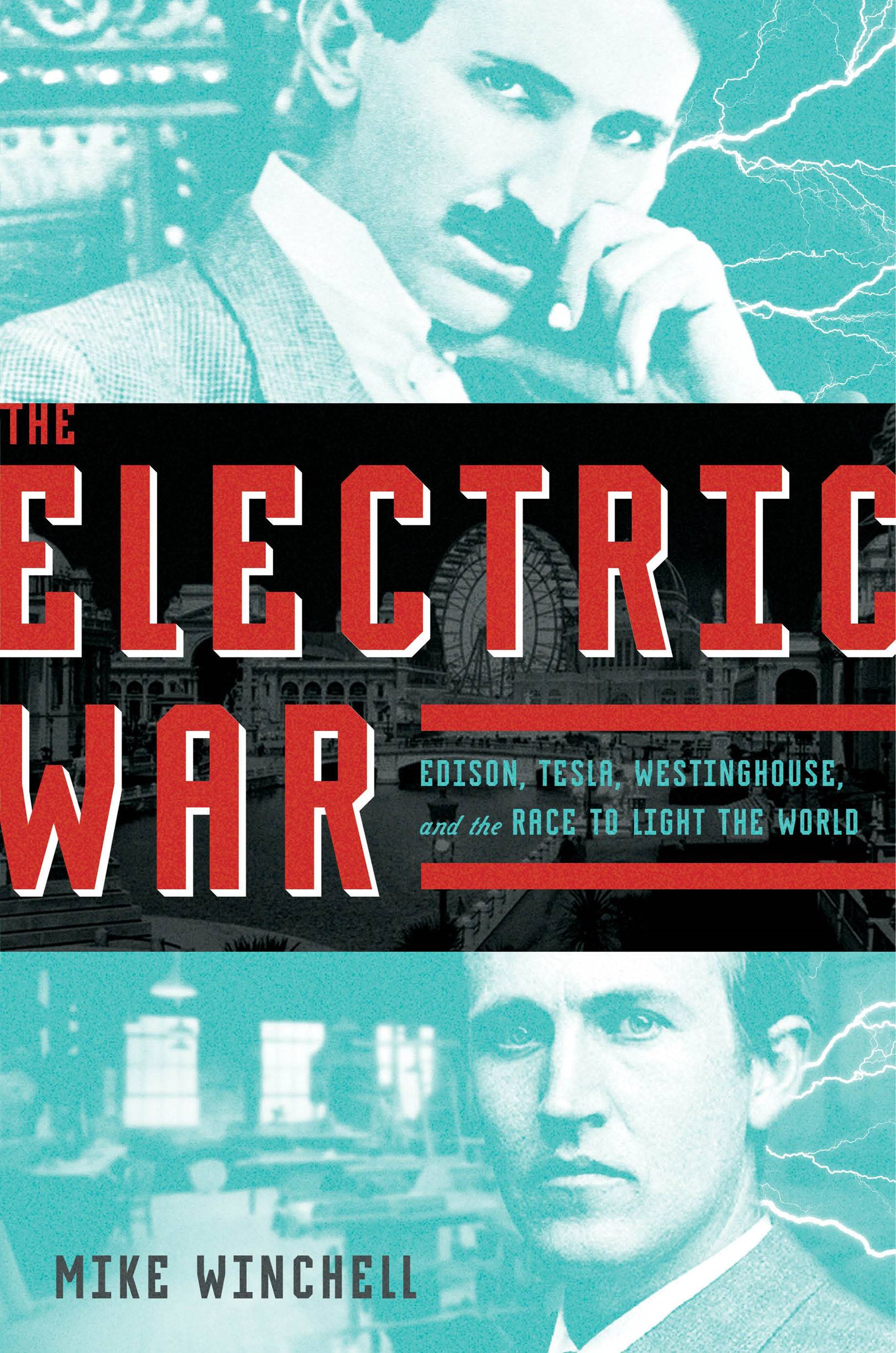Contents
Guide
Pagebreaks of the print version

The author and publisher have provided this e-book to you for your personal use only. You may not make this e-book publicly available in any way. Copyright infringement is against the law. If you believe the copy of this e-book you are reading infringes on the authors copyright, please notify the publisher at: us.macmillanusa.com/piracy.
For Shelby, A.J., and Savannah: My everything
The Gilded Age. The time period of the late nineteenth century when innovation had become big business, the next colossal invention could belong to anyone, and society itself was the battleground. The United States had established itself as an industrial superpower, leading many to say the country was run more by the patent office than by the government.
But with this boom in innovation, man was pitted against man, and a cutthroat race was on to create the newest and most profound advancements in civilization since the wheel, like the light bulb and electric current. Be the first, and fame and fortune were yours. Be the second, and nothing, just anonymity and wishful thinking. Sabotage, conspiracy, scandal, public execution everything was fair play on the Gilded Age battlefield, which matched genius against genius, scholar against scholar. Winner takes all.
With this as a backdrop, the key showdown found Thomas Edison and his firmly established direct current system of electricity pitted head-to-head against Nikola Tesla and George Westinghouse and their innovative and experimental alternating current system. The stakes were as high as they could be, since both sides knew almost every new invention that came along would be powered by whichever system won the battle. And since everything was turning to electric power, whoever won this competition would virtually run the world.
This is the story of three prominent men of the Gilded Age: Thomas Edison, Nikola Tesla, and George Westinghouse. Its about who they were as individuals, what they did to advance society, how they worked to hone and improve their inventions, and ultimately, what they did to try to best their competition and win the battle.
With regard to the treatment of animals represented in this book, the depictions portrayed will understandably be disturbing to many readers. Today we have strict laws pertaining to the humane treatment of animals. During the Gilded Age, however, the American Society for the Prevention of Cruelty to Animals (ASPCA) was still relatively young in its development, having only been established in 1866. The descriptions of animal abuse by Harold P. Brown and others in this book are an unfortunate reminder of two realities of the Gilded Age. First, it signified the dire need to strengthen the laws and regulations to help protect animals from abuse. Second, it showed the lengths these men would go to in the name of competition.
While the narrative chronicles the forces that drove these titans to the height of their craft, there is much more to share than the formative experiences and upbringing of each inventor. After all, history sometimes shines the spotlight on one character, leaving others in the dark. As such, this book will shed light on the extreme measures taken by Thomas Edison to win the race at all costs, and it will also attempt to give credit where it is due: to Nikola Tesla, a misunderstood scientific genius who cared not as much about the bottom line as he did about sharing his creations with the world.
August 4, 1890, 10:00 p.m.
Auburn Prison, Upstate New York
William Kemmler was a rat in a cage, trapped in an experiment he barely understood. He sat on his cot, staring into the small amount of space around him. A cell does not afford much freedom of movement nor allow a prisoners gaze to travel beyond the close walls that hold him tight. With bars on one side, brick and concrete on the other three, Kemmler chose brick over iron for his meditation, fixing his eyes on a stained portion of wall that was much like the rest.
Guards appeared often, peering into his cell intently, though not expecting much. The convict had been placed on suicide watch, but hed never shown any inclination to harm himself. The watch was a matter of routine and had become mandatory as the expected date of execution grew closer. How much closer, Kemmler didnt know. He knew only that sometime between August 3 and August 9 he was to be put to death for the heinous crime he had committed.
* * *
March 29, 1889, 8:00 a.m.
526 South Division Street, Buffalo, New York
It was neighbor Mary Reid who received the first confession from a blood-drenched William Kemmler, a twenty-eight-year-old vegetable peddler. Staggering into Mrs. Reids kitchen, the drunk man exclaimed, Ive killed her!
Reid screamed hysterically, not sure how to take Kemmlers claim. She, like other neighbors, had grown used to hearing violent arguments between William and his wife, Matilda Tillie Ziegler. Kemmler was drunk. This was no surprise, even at the early morning hour, but this time he was covered in blood.
Kemmler rushed out of the kitchen and then reappeared moments later with his four-year-old daughter, Ella. The girl cried uncontrollably, splashes of blood on her clothing. Mrs. Reid knew it was true.
A subdued William Kemmler did not resist when taken into custody less than an hour later.
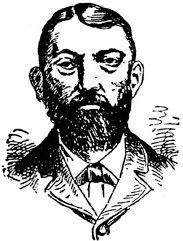
William Kemmler, the first man condemned to death by electricity, New York Herald
The crime scene was gruesome. On the hay-covered kitchen floor, in a dark red puddle, was a small hatchet. Twenty-six gashes covered the womans skull. Five severe fractures highlighted the damage to the womans head, her right arm had five substantial cuts, and both shoulders had large gashes. Dr. Blackman, the unfortunate gentleman called to inspect the victim at the scene, said it was the worst case he had ever been asked to examine.
At the police station the next day, a hungover William Kemmler was honest with the Buffalo police. I wanted to kill her, Kemmler admitted. And I am ready to hang for it.
A moment later, with little more to add, he asked for a glass of whiskey. He was denied.
Kemmler very well might have been ready to die for his crime, but he would not die by hanging. Instead, the only ties that would bind him would be ones that would hold him down. Restraints. Capital punishment had just been turned over to science, and the entire world was talking about this historic news. But Kemmler was illiterate and often intoxicated, so hed had no clue of the momentous change. A victim of bad timing, William Kemmlersoon to be called a hatchet fiend by the presswould be the first to die in the new vehicle of capital punishment: the electric chair.
* * *
August 5, 1890, 1:00 a.m.
Auburn Prison, Upstate New York
Prison chaplain Horatio Yates and Reverend Dr. Houghton walked close together in the near-empty corridor, not a word uttered between them. They arrived at William Kemmlers dark cell, where the prison guards had to shake the man from sleep.
Kemmler had seen these two men more than a few times over the last several weeks, but a visit in the darkness of night could mean only one thing. The two holy men solemnly informed Kemmler, still prone on his cot, that the time of his execution had been set for 6:00 a.m. the following day, August 6, 1890. Kemmler nodded calmly, turned away, and stared at the brick wall.



